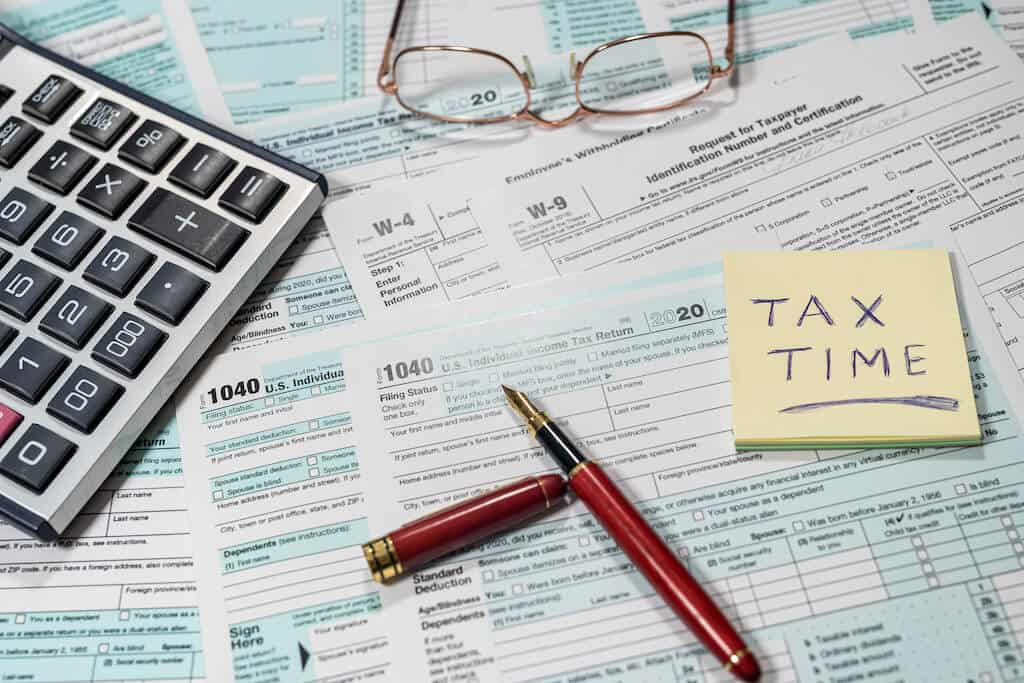US Residency and Taxes: All You Need to Know
December 15, 2023 | Blog | 6 minute read
Expat Tax Blog. Tax Tips for US Americans abroad.
 All blogs are verified by IRS Enrolled Agents and CPAs
All blogs are verified by IRS Enrolled Agents and CPAs

What does residency mean to the IRS? Generally speaking, all US citizens and residents receive fair treatment under tax law set by the IRS and as US tax residents.
In order for a non-US citizen (termed ‘’alien individual’’ by the US) to be treated and seen as a US resident, they must satisfy either the green card test, or the substantial presence test. These specific US residence tests apply based on an annual calendar year (January 1 – December 31).
This means, you are generally subject to US Tax Law on your worldwide earnings if either of the following apply:
- You are a US Citizen, regardless of where you work or live
- You are/were living in the US and pass one of the above tests for that tax year, regardless of your citizenship
What is the Greencard Test?
The green card test from the IRS is the actualization and confirmation that you are a lawful, permanent resident of the United States at any one time during the tax/calendar year. Green card holders generally receive the same treatment as US citizens when it comes to US taxation and can get a US Social Security Number.
What this means, is that if you are a green card holder not living on US land (like an Americans expat), the IRS still considers you as a tax resident. Even if you’re not physically residing in the US.
As long as you are a US citizen or green card holder, no matter where you are in the world, you are considered a US tax resident. This is until you give up your green card and declare to the IRS that you are ending your US tax residency status.
Starting Date of Residency under the Green Card Test
- If you fit the green card test but not the substantial presence test during the calendar year: Your US residency date is the first day you are present as a lawful permanent US resident, within the calendar year. This is the date the USCIS (United States and Immigration Services) approved the form for you to become an official US resident/immigrant.
- If you fit both the green card test and the substantial presence test (see below for more info) during the calendar year: Your US residency date is the earliest of the first day you are present in the US as a lawful permanent resident. Or you are present during the year you passed the substantial presence test.
Received Your Green Card Abroad?
- Your US residency starting date is the first day of physical presence in the United States after you received your green card. As an example, let’s say you were living in Germany, received your US Green card, and then moved to the US three months later. The day you officially land in the US is your residency starting date.
What is the Substantial Presence Test?
To meet the substantial presence test and you may a US resident for tax purposes, you must:
- Be physically present in the United States for at least 31 days throughout the current year, and 183 days throughout a 3-year period which includes two years immediately before that.
The 3-year period (which includes two years immediately before that) is that the following number of days that count:
- All of the days that you were present in the US during the tax year year
- One-third of the days you were present in the US during the first year before the tax year
- One-sixth of the days during the second year before the tax year
An example to illustrate:
Sally needs to determine if she meets the substantial presence test for this tax year (2023). In 2024 she has been in the US for 120 days. Now she needs to count back and see how long she has been living in the US for the previous two years. Sally was in the US for 60 days in 2022 and 60 days in 2021.
So the total days she would add up to see if she passes the substantial presence test are:
Current Year (2024): Full number of days in US = 120 days.
First Year before Current Year (2022): One-third number of days in US = 20 days
Second Year before Current Year (2021): One-sixth number of days in US = 10 days
The total days she has been in the US during the 3-year period comes out to 150, which is short of passing the substantial presence test. Therefore, Sally does not meet the substantial presence test.
If you are considered that this may be your case or maybe you just want to learn more about the days of presence test, you probably want to check out the substantial presence test on the IRS website.
Starting Date of Residency Under the Substantial Presence Test
- If you do meet the substantial presence test, your US residency starting date is going to be the first day you are present in the US during the current calendar year.
How to Start Residency
The process of starting your US residency is straightforward.
First-choice US residents are individuals who receive similar treatment to a US resident for part of the tax year if they:
- do not meet the substantial presence test or the green card test for this year, or the year before. Plus, were not treated as a US resident for part of the previous year by personal choice. But will be able to meet the substantial presence test next year.
To officially make yourself a first-choice US resident, you’ll need to:
1. Be present in the United States of America for at least 31 days in a row in the tax year, and
2. Be present in the United States for at least 75% of the number of days beginning with the first day of the 31-day period and ending with the last day of the current year. (For purposes of this 75% requirement, you can treat up to 5 days of absence from the United States as days of presence in the United States.)
When counting the days of presence in (1) and (2) above, do not include any days in the United States as an exempt individual under any of the days of presence in the United States exceptions to the substantial presence test.
IRS.gov
Starting Date for First-Year Choice
- Present at least 31 days? Your residency starting date for this year is going to be the first day of the earliest 31-day period (as discussed above, from number 1) that you can use to be granted as a first-year choice/US resident. Once you are granted, you’ll be a US resident for the remaining year.
- Present for more than 31 days? If you have been staying in the US for more than 31 days and satisfy the conditions from number 2 above, your first-choice US residency start date is the first day of the 31-day period.
Attaching Your Statement to Form 1040
In order to receive official US residency status as a first-year choice individual for this year, you’ll need to attach a statement to your US federal tax return.
How to End Residency
Are you looking to end your US residency as an individual? There are a couple of ways to do it:
Ending Residency Under the Green Card Test
As a lawful, permanent resident of the United States, your residency ending date will be under the immigration law.
If you do not want to be subject to taxation under the US law as a resident alien, you will need to do one of three things:
- Turn in your green card to the USCIS (United States Citizenship and Immigration Services) voluntarily, and renounce your United States of American immigrant status
- Have the USCIS revoke your immigration status
- Have the US federal court have your immigrant status judicially revoked
However, just because you cease to be a US permanent resident/citizen, you still may be subject to special tax provisions and reporting requirements. Do check out this specific IRS Expatriation post to learn more.
Ending Residency Under the Substantial Presence Test
If you met the substantial presence test, the ending date of your US residency is the last day of presence the United States. Following with a period from which:
- You have a close connection to a foreign country and –
- Are not present in the US, and –
- Were not a resident of the US during the calendar year after your last day of presence in the US
As a general rule, the ending date of residency will be December 31 of the year an individual leaves the US. Otherwise, the ending date is going to be the last day that you are physically present in the US, if for the rest of the calendar year:
- You have maintained a closer connection the foreign country instead of the US
- Your tax home is in a foreign country
Official Statement to the IRS
Additionally, you’ll need to make a statement to the IRS with the termination date of your US residency.
When Do You Need a Dual State Tax Return
Your residency status is subject to tax purposes by the IRS if you have been both a non-resident alien and a resident within the tax year. To determine what your US tax liability is, for a dual-status year, depends on a few rules due to which part of the year you are or have been a resident of the US.
Tax Rules:
- If you were a US resident alien for a part of the year: you will face taxation on all income sources (including outside the US). File Form 1040 and be sure to write ‘’Dual Status Statement’’ across the top.
- If you were a nonresident alien in the US for part of the year: you will face taxation on income only from US sources. You will need to file Form 1040NR and write ‘’Dual-Status Return.’’
Find more information about restrictions for filing dual-status tax returns, resident alien filing procedures, etc on IRS page regarding Taxation of Dual-Status Individuals.
American Abroad Expat Tax Support
Are you a US citizen abroad in need of expat taxes support? Our expat tax software, MyExpatTaxes is helping thousands of US expats get back on track with the IRS. We change complicated tax forms into something simple.








